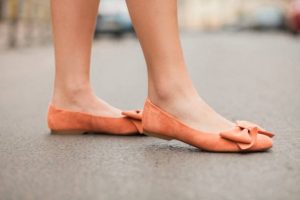Among the many advantages of wearing low heels is that it lowers your risk of back pain, ankle sprains, and other musculoskeletal injuries. However, wearing heels too high can increase your chances of falling. And, if you’re not used to walking around in heels, they can cause a lot of discomforts, including back pain. Wearing high heels can also result in an injury if your foot sprains or becomes unstable. If you wish to learn more, check it out here:
Reduces risk of falling
 A new study has found that older women with flat shoes are at a lower risk of falling than older women wearing shoes with high heels. The high contact area of the low heels decreases the risk of falling during everyday activities. While this study was limited to a single type of footwear, the overall results indicate that older women should avoid wearing high heels as much as possible. However, a larger contact area may be less dangerous for older women than a low heel.
A new study has found that older women with flat shoes are at a lower risk of falling than older women wearing shoes with high heels. The high contact area of the low heels decreases the risk of falling during everyday activities. While this study was limited to a single type of footwear, the overall results indicate that older women should avoid wearing high heels as much as possible. However, a larger contact area may be less dangerous for older women than a low heel.
If you wear shoes with high heels, you’re likely to have trouble maintaining your balance. High heels and shoes with slippery soles can also make your trip. People with weakened feet or foot injuries are more likely to fall. Those with foot problems should avoid wearing shoes with high heels, and heavy stretched or poorly fitting soles. A low-heeled shoe with a firm heel may cause a fall, but the pain caused by the heel may be worth the pain.
Another study has shown that wearing shoes with high heels increased the risk of falling by 9%. In addition, the researchers found that people wearing high-heel shoes had shorter strides and higher cadence, which were all factors that increased their risk of falling. The researchers also found that the higher the heel, the smaller the coefficient of friction and the smaller the critical tipping angle. Those findings suggest that older people with high-heel shoes should wear shoes with low heels or slip-resistant soles.
While most people wear high heels for appearance reasons, the lower portion of the shoe is made up of the sole, shank, and heel. The sole is divided into two parts: the insole and the outsole. Choosing a shoe with a thick, sturdy, waterproof outsole is better for overall safety. The shank serves as a reinforcement for the shoe, preventing the shoe from stretching during regular wear. On the other hand, the heel is designed to hit the ground with each step. Therefore, its impact on the floor is vital to balance and prevent falling.
Reduces risk of back pain
Wearing high heels can cause various health problems, such as back pain. Besides creating a painful appearance, high heels alter the curvature of the spinal column, causing the back to tilt forward. It can strain your knees, hips, and lower back. Overuse of heels can also cause arthritis. The best way to minimize the risk of back pain is to wear flat shoes or round-toed heels.
In reducing the risk of back pain, wear low heels with thick soles. High heels with thin soles can cause instability and reduce back pain risk. To prevent pain, choose shoes with thick rubbery soles. Also, choose shoes that are smaller in size, so your foot does not slide forward. See a doctor if you develop back pain after wearing high heels for extended periods. Wedge shoes are always in style and offer more support.
In addition to choosing shoes with arch support, check the heel height. High heels can increase the risk of back pain because they force your pelvis to rotate. Wearing high heels for extended periods may worsen the pain. Experts recommend that you wear high heels for just two inches. In addition, shoes with low heels should be lightweight and have arch support. If you’re concerned about your feet, consider wearing shoes with orthotic devices or therapeutic footwear.
Many factors contribute to back pain, including posture, diet, and exercise. The height of your shoes and your posture is a significant contributors. The lower back is the most vulnerable to pain and may have a disproportionately high incidence of low-grade back problems. Wearing high heels can cause your back to curve abnormally, putting extra stress on the back. Even the slightest deviation in your posture can cause back pain and lead to a fall.
Wearing high-heeled shoes can cause posture issues, as high heels force the forefoot to lean forward. As a result, your lower back and the rest of your body will lean backward, resulting in uneven wear and tear on the vertebral discs and joints. It’s no wonder that the height of your high-heeled shoes can lead to postural disorders.